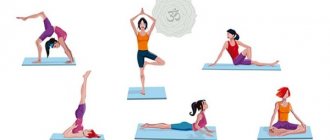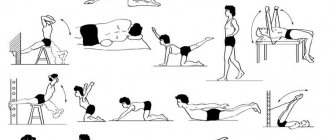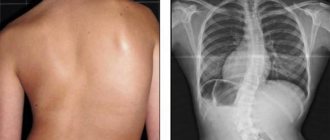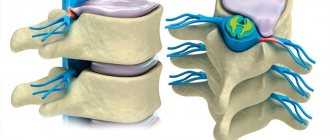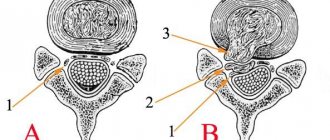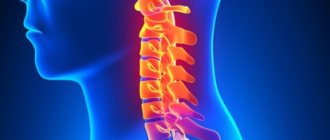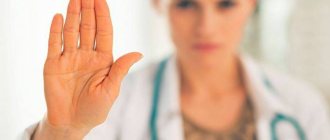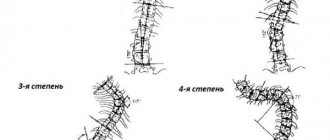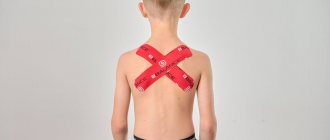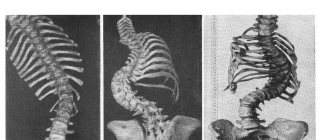Scoliosis is a lateral curvature of the spinal axis, which in severe forms is fraught with serious dysfunction of internal organs. The pathology causes visible disturbances in body posture and proportions: skew of the body to one side, protrusion of the shoulder blades, asymmetrical position of the shoulders in relation to each other, skew of the hip line. Scoliotic disease refers to a progressive type of spinal deformity. And this suggests that if the pathological process is not stopped in a timely manner and special prevention is not regularly carried out, then the degree of curvature will only increase.
Stage 4 x-ray.
According to statistics, approximately every 6th person on the planet has scoliosis of one severity or another; within Russia alone, currently about 50 million people suffer from a similar pathogenesis. Moreover, in recent years the incidence rate has increased sharply, by an average of 15%. Of 100% of all patients diagnosed with this disease, about 10% require surgical correction of a curved spine, since the pathological deviation of the spinal axis has reached a severe level.
Photos of a 15-year-old girl before and after surgery.
In America alone, about 500 thousand operations are performed annually for this pathology, in Russia there are approximately 250 thousand people who need surgery every year, but not everyone undergoes the corrective procedure. In our article we will dwell in detail on the surgical type of treatment, on which some patients have high hopes.
Scoliosis: indications for surgery and basic information about surgery
According to statistics, the diagnosis of scoliosis is made for the first time, as a rule, in childhood. As experts note, if an axial deformity is detected in a child, every effort must be made to eliminate as much as possible the changes that have begun before the age of 12, otherwise, with rapid growth, the curvature will actively progress. Excessive deformations of the spinal column have a very negative impact on the functioning of the heart and respiratory organs, and also often cause compression of the spinal cord and nerve roots, which is manifested by severe pain.
Diagnostics
At this stage of scoliosis development, CELT specialists conduct two types of diagnostic studies:
- the severity of deviations from the norm of the spine and other skeletal tissues;
- negative impact of pathology on the functioning and location of internal organs.
X-ray examination and MRI are carried out in order to determine the exact angle of curvature of the spine, its location and features. In order to determine what effect scoliosis has on the internal organs, the following are performed: ultrasound of the internal organs and heart, spirometry, electrocardiography.
Reasons for development
There are many reasons for the development of the disease. Let's consider what provoking factors can cause an abnormal structure of the spinal column.
- The disease can be caused by congenital anomalies, including abnormal formation of vertebrae, different leg lengths, and fusion of ribs.
- Neuromuscular pathologies such as cerebral palsy, poliomyelitis, muscular dystrophy of skeletal muscles, and intervertebral hernia can serve as a trigger for the formation of pathological curvature of the spine.
- In adults, scoliosis can be caused by degenerative processes in the spine, osteoporosis and spondyloarthrosis.
- In the majority of cases, the etiological factor cannot be determined; such a disease is called idiopathic.
Minor curvatures and moderate scoliosis are treated using conservative methods, namely through physical therapy, wearing orthopedic corsets (mainly recommended for children during periods of rapid growth), physiotherapy, and massage. Surgery is used only in severe cases.
When to have surgery
Surgery is indicated for severe deformities due to the high risk of severe pathologies of the cardiovascular system, pulmonary dysfunction and other significant health problems. Spinal surgery to correct pathological curvature of the axis is indicated in the following situations:
- with severe chronic pain syndrome and severe limitation of mobility, which are not amenable to conservative therapy;
- if a progressive deformation is detected, the angle of curvature of which has reached 40-45 degrees;
- in the presence of a strong curvature with a deviation of 50-60 degrees, surgery is urgently necessary, especially for children, since this degree inevitably leads to pathologies of the heart and respiratory system;
- if synostosis (fusion) of the ribs is detected, as well as in the presence of additional hemivertebrae that cause scoliotic disease (children with these problems are operated on at the age of 13-15 years);
- in the presence of respiratory and heart failure caused by a pathology such as kyphoscoliotic heart (without surgery, life expectancy is critically short);
- if there is a clear trend towards a high probability of damage to the spinal cord, spinal vessels and spinal nerves.
Stages of the disease.
Be prepared for the doctor to prescribe surgical treatment for you if you seek help with stage 3-4 pathology. And this will be the most logical option for solving an advanced problem; conservatively aligning the spine and eliminating scoliotic consequences in this case is not possible. Surgical treatment for severe scoliosis is carried out in various Russian regions. However, one cannot help but notice that Moscow is the leading city within the Russian Federation, where surgical treatment for scoliosis in children and adults is performed with the highest quality.
Why does scoliosis occur?
Most often, scoliosis develops in children during the period of active growth, when the child’s body elongates. It is not possible to establish the exact cause of the disease in more than 75% of cases, then scoliosis is identified as idiopathic (from Greek - of unknown nature).
In the remaining number of cases, scoliosis develops as a result of spinal trauma or complications of various diseases ( acquired scoliosis ), or as a result of congenital underdevelopment of the vertebrae and ribs ( dysplastic / congenital scoliosis ).
Scoliosis is often referred to as poor posture. However, unlike the latter, this disease cannot be treated with simple manipulations and medical methods, but requires regular and complex therapy. It is necessary to treat scoliosis, since scoliosis is characterized by progressive development.
The cost of surgical treatment of scoliosis at the Spizhenko Clinic is determined in each case of the disease individually, as it depends on the degree of curvature of the spine, the general health of the patient, his age, the presence of concomitant diseases and many other factors.
If you have any questions about the surgical treatment of scoliosis at the Spizhenko Clinic or you require advice from our neurosurgeon, please contact our contact center in any way convenient for you: call or feedback form.
Types of operations for scoliosis
Surgical techniques involve the installation of movable and fixed metal fixing structures directly on the spine, thereby significantly reducing the degree of distortion of the spinal line. The corrective system is implanted under general anesthesia, the average session time is 2-3 hours. Movable types of braces are placed in children as their spine continues to grow.
The device is installed permanently; it is expected to be removed only in case of complications. After back surgery, you may need to wear a special orthopedic corset for a long time. We invite you to familiarize yourself with some types of interventions. It is worth noting that this is an incomplete list; today there are dozens of operational technologies, the origin of which was given by the methods described below.
- Harrington's operation.
This method has been used since the 60s of the 20th century and was first tested in America. Its essence lies in the installation of a metal structure consisting of rods and movable hooks. The distractor rod is attached to the concave part of the curvature of the spine, the compressor rod is installed on the convex area. The rods are fixed using hooks that are attached to the vertebral arches at the required levels. Next, posterior spinal fusion is performed. After the intervention, a cast is applied, the patient will spend at least 3 months with it, then he will need to wear a corset for 6 months to a year. The degree of curvature is eventually reduced to a maximum of 60% of the original values. Harrington technique - Cotrel-Dubousset method.
The invention belongs to French orthopedists and has been used since the 80s of the last century. The technique is approximately similar to the previous one. However, in terms of design parameters, the implanted system differs from the Harrington device in that it is much more rigid, thereby achieving high-strength stabilization of the spine in the corrected position. Therefore, there is no need to combine the procedure with spinal fusion and use supporting plaster corsets after it. cotrel-dubousset - Luke's method.
The method was developed in Mexico and has been used since 1982. The implant consists of two cylindrical rods placed on the concave and convex sides of the spinal arch. Each element of the spine along the entire deformity is fastened to the rods not with hooks, but with wire sutures sublaminarly. Since a large number of fixation wires are passed through the spinal canal, this method carries a high risk of damage to spinal structures and the development of neurological symptoms. This operation allows you to achieve axis correction from 50% to 90%. Postoperative wearing of a corset is usually not required. Luke's method
If you are still tormented by fears and doubts about whether it is worth straightening the axis of the spinal column, let’s say one thing, it is inappropriate to be afraid in your case. You, like no one else, know how much suffering this unfortunate disease brings. In addition, modern orthopedic technologies have come a long way, and today it is quite possible to undergo a corrective procedure with minimal discomfort.
The only thing you have to endure is that the recovery is not as quick and easy as you would like: it will take from 6 to 12 months. And, of course, everything will go well if the health of your spine is in the hands of a professional surgeon.
Operation methods
With scoliosis of 1st and 2nd degrees, in 96% of cases they try to get by with conservative treatment. Exceptions include congenital anomalies of the spine. Which can aggravate the patient's condition.
Scoliosis grades 3 and 4 can be treated surgically. For this purpose, the following types of surgical intervention are used :
- With rear access . An incision is made in the midline of the torso. The advantages of this type of operation are that it is less traumatic. However, it is not always possible to achieve complete correction of a cosmetic defect.
- With anterior access . An incision is made in the area of the ribs, one rib is removed and subsequently used as a natural fixing material. The disadvantage of this method is that it is highly traumatic and causes scars on the chest and abdominal cavity. But these operations are more preferable in a cosmetic sense.
Types of operations
Did you know that...
Next fact
Posterior spinal fusion
It is used in the treatment of mobile scoliosis, mainly in young people. During surgery, the processes and cortical bone layer are compressed on curved vertebrae. An implant in the form of bone chips is placed in its place. The top is covered with muscles. Subsequently, all parts of the bone grow together safely.
After the operation, the patient needs bed rest for 4 months and is in a plaster corset. Only after this is he allowed to get up. The corset is replaced with an orthopedic one.
In spinal fusion, metal plates are attached to the spine
Posterior spinal fusion with thoracoplasty
This operation is performed when scoliosis has caused curvature of the chest and ribs. The technique is similar, only several ribs are additionally cut off. Subsequently, the chest cavity is leveled.
Iliospondylolavsanodesis
This operation is performed for fixed scoliosis. First you need to correct the persistent curvature, then apply a fixing block. Mylar tape serves as a kind of “jack” here, which does not need to be removed later.
The tape is fixed so that its tension straightens the arch of the spine. After the operation, the patient is also in a plaster corset in a special corrective bed. After three months, the corset is changed to an orthopedic one, which is worn for a year.
Scoliosis often occurs in a severe form, causing changes in the shape and anatomy of the vertebrae.
In these cases, the following operations are prescribed.
Discotomy
This is the removal of a spinal disc. First, the transverse processes are removed, then the fibrous rings of the discs are cut. After the operation, the patient is in a plaster corset for a year.
When the disc is removed, an implant is installed in its place
Episode
Destruction of the vertebral body. Performed for rapidly developing scoliosis in children. A part of the disc, the nucleus pulposus, is removed, and bone chips are applied to this place. First, the patient is placed in a plaster bed, then a plaster corset is put on. After 3-4 months, the corset is replaced with an orthopedic one and the patient is allowed to walk.
Wedge resection
Its essence is to remove the convex part of the vertebrae. It also requires a long stay in a plaster bed and corset.
The above methods are very traumatic and require a long rehabilitation period. The patient “falls out of life” for at least a year.
Today, many modern clinics offer the latest methods of treating scoliosis. Advantages of the methods :
- No transplant required.
- No big cuts.
- The cortical bone is not removed.
- Reducing the recovery period to several weeks.
- Possibility of carrying out in children.
These operations are based on the installation of special spinal structures that act as a “jack”, stretching the spine and correcting the curvature.
Screws are screwed into the patient's vertebral arches , onto which a metal plate is then installed. This plate is the frame for the spine. The vertebrae are pulled by the screws and the spinal column is straightened. The plate is located in the subcutaneous layer and does not interfere with normal life. After leveling it is removed.
The only disadvantage of this treatment is the high price . Not all medical institutions provide this service. A highly qualified surgeon is also required.
Video: “Technique for performing surgery to correct scoliosis”
Scoliosis Correction Clinics
You must understand that the spinal system is a very vulnerable part of the musculoskeletal system, containing the spinal cord, from which bundles of nerve fibers emerge. And even one mistake by a specialist during a complex session can turn into a disaster for your health. Therefore, any surgical session on the spine should be performed only in good clinics.
The ideal option is to choose a decent foreign medical institution. We pay attention to the fact that, for example, similar operations are performed in Israel in domestic hospitals. In terms of professionalism, the technologies and implantation systems used, and the quality of surgical care, Israel is at the forefront of medical science.
In addition to Israel, the Czech Republic is famous for the same impeccable spinal surgery.
Prices for similar high-tech assistance are 2-3 times lower, and they already include the cost of full rehabilitation.
Research Institute of Orthopedics and Traumatology, Ufa
Ufa has good recommendations, we mean the Republican Research Institute of Orthopedics and Traumatology.
Below we list worthy medical institutions in Russia where they perform correction of a curved spine in adults. Scoliosis is surgically corrected in adults in St. Petersburg and other cities at a satisfactory level in:
- RNIITO im. Vredena (St. Petersburg);
- Clinic of Spinal Neurosurgery and Neurology "AKSIS" (Moscow);
- CITO im. N.N. Priorova;
- Novosibirsk Scientific Research Institute of Orthopedics;
- NC "Restorative Traumatology and Orthopedics" named after. Ilizarov (Kurgan).
In our country, domestic technologies and, accordingly, Russian-made endocorrectors are predominantly used. The most common of them are the methods of Kazmin, Fishchenko, Chaklin, Rodnyansky-Gupalov, Gavrilov.
The article provides a historical analysis of surgical methods for treating scoliotic disease. Various surgical methods using internal metal structures and external fixation devices are described in a comparative aspect.
Surgical treatment of scoliosis
The article presents a historical analysis of the surgical treatment of scoliosis. Describes the various surgical techniques using internal metal structures and external fixation devices in a comparative perspective.
The first detailed clinical description of scoliosis belongs to Ambroise Paré, who outlined the basic principles of treating scoliosis with the help of an iron apparatus. At the same time, as some authors point out, this disease was also known to Hippocrates, who used wooden splints to correct spinal deformities [17].
Analyzing the results of examination and surgical treatment of 377 patients, S.A. Mikhailov (2000) revealed that the presence of concomitant osteoporosis and osteopenia is one of the factors for the loss of postoperative correction and in 14.2% of patients with scoliosis is the cause of fracture of the supporting bone structures of the spine. This study shows the need to determine the density of vertebral bodies in the preoperative period and the advisability of drug treatment and selection of optimal treatment tactics.
In the surgical treatment of severe forms of scoliosis, the percentage of complications is quite significant (18.7%) [4]. A.I. Kislov et al. (2000), according to various authors, indicates the proportion of complications in this category of patients from 11.8 to 57%. The imperfection of methods and devices for treating patients with severe progressive forms of scoliosis and kyphoscoliosis requires further in-depth study of the problem and the search for optimal solutions. To prevent severe complications, such as massive blood transfusion syndrome during deformity correction operations in patients with scoliosis, E.E. Biryukova et al. (2001) recommends normovolemic hemodilution with 500 ml of blood taken before surgery and returned at the height of blood loss.
The main distinguishing feature of congenital spinal deformities is their rigidity. Immobility is especially pronounced in cases of segmentation disorders, and conservative treatment and preoperative mobilization in such cases are contraindicated [34].
Surgeons have been performing surgical correction of scoliosis for more than 150 years. Of all surgical interventions, posterior osteoplastic fixation of the spine has gained the greatest recognition. However, the results of this operation turned out to be disappointing, since it ensures partial preservation of the correction on average in 11+3.6% of operated patients. Back in 1839, Guerrin [14] reported the successful use of myotomy of paravertebral muscles. However, in subsequent years, other authors using this method were able to obtain only minor corrections of the deformity.
L.I. Shulutko (1968) considered it obligatory to perform a tenoligamentocapsulotomy on the concave side of the curvature, and then supplement it with one or another type of spinal surgery. Currently, due to low efficiency, mobilizing operations are used only as an element of surgical intervention [32]. Due to operations on the bodies and intervertebral discs of the vertebrae, large deformities of the spine are eliminated [24].
Correction of congenital spinal deformities involves surgical treatment of deformities due to hemivertebrae and wedge-shaped vertebrae. Experience in surgical treatment of this pathology has been accumulated since the beginning of the twentieth century [27]. The most effective surgical correction of kyphosis in children is achieved using hook contractors with sublaminar fixation according to Luque; for adolescents and adults, rigid polysegmental CD systems are used [18]. A number of authors, evaluating the clinical experience of using transosseous osteosynthesis and transpedicular fixation of injuries and diseases of the spine, believe that this method allows intraoperative elimination of multiplanar deformity,, if necessary, additional correction in the postoperative period and early activation of patients without the use of external immobilization. The method of correction using two rods and rigid segmental fixation with sublaminar wires was proposed by Edward Luke [16]. Paul Harrington (1988) created his endocorrector, consisting of two metal rods that work on the principle of distraction and contraction. When using the Harrington-Luke method, the operational correction was 65+4.40, and the Armstrong method - 44.5+4.80. However, the use of the Armstrong method for severe rigid curvatures (deformation angle more than 600) is not justified due to the technical impossibility of installing the structure on the convex side of the curvature [19].
Yu.I. Pozdnikin and A.N. Mikiashvili (2001), using a three-component version of surgical treatment of kyphoscoliosis, including surgical mobilization, skeletal, craniotibial traction and subsequent correction and stabilization of the deformity with a Harrington-type distractor, achieved correction ranging from 50 to 85.5% of the initial curvature value. Based on the methods of Harrington and Luke, J. Cotrel and J. Dubousset developed an original method of spinal correction using rods, hooks and segmental fixation to the vertebral arches. A. Dwyer (1973) and K. Zielke (1983) proposed rather complex techniques using anterior approaches for surgical correction of scoliosis. At the same time, the authors themselves note up to 43% of complications. According to some authors, operations on the vertebral bodies make it possible to achieve better correction of spinal curvatures [24, 31]. For the correction and stabilization of spinal deformities Ya.L. Tsivyan (1993), JE Lonstein (1999) suggest performing operations on the vertebral bodies and correction with a metal endocorrector.
A.I. Kazmin (1968) was the first to develop and apply a method of two-stage surgical treatment of scoliosis: the first stage is the use of a metal distractor to correct and fix the lumbar curvature, the second stage is discotomy or wedge-shaped resection of the thoracic spine [9]. The development and introduction into clinical practice of spinal endocorretors made it possible to simultaneously create a corrective force and maintain it throughout the entire period of treatment [3, 4, 5, 6, 7, 8, 12, 21, 26].
Since 1988 A.I. Kislov et al. (2000) uses a controlled spinal distractor of its own model, which promotes additional correction of scoliosis by 5-200.
I.A. Norkin (1994) developed and successfully used a dynamic device that allows correction of kyphoscoliosis in the sagittal and frontal planes throughout the entire period of child growth. The Novosibirsk Scientific Research Institute of Traumatology and Orthopedics uses the “Dynesys” system (Sulzer, Switzerland), consisting of titanium transpedicular screws and elastic-elastic elements connecting them [23]. According to the authors, in the early postoperative period, restabilization of the spinal segment occurs, while maintaining functional mobility in it, and the method of dynamic fixation has an undoubted future. According to the literature, the Cotrell-Dubousset endocorrector is the most common and effective system [2, 16, 28, 29,].
S.T. Vetrile and A.A. Kuleshov (2000, 2001) studied the results of treatment of 52 patients suffering from scoliosis. CD Horizon instruments were used for surgical correction. This method was used according to the classical method and in combination with discectomy, spondylectomy, and interlaminectomy. A differentiated approach made it possible to correct scoliosis up to 600 and significantly regress neurological disorders in patients with neurological symptoms. In order to stabilize the achieved correction of spinal deformities of various origins, many authors have used and recommended various methods of spinal fusion [10].
A promising direction in the treatment of spinal deformities of various origins is the development and implementation of external correction and fixation devices [33]. The use of these devices makes it possible to carry out immediate correction, and in case of severe and rigid curvatures of the spine, to continue correcting deformities in various planes.
I. Ibragimov, M.Ya. Ibragimova, L.Ya. Ibragimova, U.Kh. Khatuev
Kazan State Medical Academy
Ibragimov Yakub Khamzinovich - Doctor of Medical Sciences, Professor of the Department of Traumatology and Orthopedics
Literature:
1. Biryukova E.E., Pletnev I.N., Vetrile S.T., Kassil V.L. Acute normovolemic hemodilution as an alternative to hardware-based blood-saving techniques during operations for the correction of spinal deformities in patients with stage III-IV scoliosis // Bulletin of Traumatology and Orthopedics named after. N.N. Priorova. - 2001. - No. 4. - P. 25-29.
2. Vetrile S.T., Kuleshov A.A. Surgical treatment of scoliosis in children, adolescents and adults using the Cotrel-Dubousset system // New technologies in medicine: Sat. abstract scientific-practical conf. with international participation. Part I. - Kurgan, 2000. - pp. 40-41.
3. Vetrile S.T., Kuleshov A.A. Shvets V.V., Vetrile M.S. Features of the course of surgical treatment of dysplastic lumbar and thoracolumbar scoliosis in children and adults // Bulletin of Traumatology and Orthopedics. - M., 2011. - No. 2. - P. 71-80.
4. Volovik V.E., Tyazhelkov A.N., Elistratov S.M. Surgical treatment of children and adolescents with severe forms of progressive scoliosis // Orthopedics, traumatology and prosthetics. - 1993. - No. 4. - P. 23-26.
5. Gatiatullin R.R. Surgical treatment of scoliosis with a two-plate endocorrector (Clinical and experimental study): abstract. dis. ...Dr. med. Sci. - M., 1996. - 42 p.
6. Gatiatullin R.R. Latinskaya V.S., Shubkin V.N. and others. Surgical treatment of grade III-IV scoliosis with plate endocorrectors // Spine Surgery. - 2006. - No. 1. — P. 33-38.
7. Zaretskov V.V., Rubashkin S.A. Three-dimensional surgical correction of gross rigid scoliotic deformity // Bulletin of Traumatology and Orthopedics. - M., 2008. - No. 1. - P. 92.
8. Ibragimov Y.Kh., Ibragimova M.Ya., Ibragimova L.Ya. et al. Scoliotic disease // Practical medicine. - 2010. - No. 2. - P. 63-67.
9. Kazmin A.I., Fishchenko V.Ya. Discotomy (etiology, pathogenesis and treatment of scoliosis). - M.: Medicine, 1974. - 200 p.
10. Kirsanov K.P. Experimental substantiation of the method of transosseous compression-distraction osteosynthesis in vertebrology: abstract. dis. ...Dr. med. Sci. - Kurgan, 1997.
11. Kislov A.I., Mitroshin A.N., Vasilisov D.B. Ways to optimize surgical treatment of severe forms of scoliosis using a dynamic spinal distractor // New technologies in medicine: Sat. abstract scientific-practical conf. with international participation. Part I. - Kurgan, 2000. - pp. 125-126.
12. Korzh N.A., Mezentsev A.A. Surgical treatment of juvenile idiopathic scoliosis // Spine Surgery. - 2009. - No. 3. - P. 30-37.
13. Kuleshov A.A., Vetrle S.T., Zhestkov K.G. and others. Surgical treatment of scoliosis during the period of incomplete growth of the spine // Bulletin of Traumatology and Orthopedics. - M., 2010. - P. 9-16.
14. Latypov A.L., Latypova N.A. Issues of etiology and surgical treatment of scoliosis. — Kazan: Tat. book publishing house, 1988. - 80 p.
15. Mikhailov S.A. Surgical treatment of patients with progressive forms of scoliotic disease and its consequences: abstract. dis. ...Dr. med. Sci. - St. Petersburg, 2000. - 35 p.
16. Mikhailovsky M.V., Sadova M.A. Surgical treatment of scoliotic disease. - Novosibirsk: Novosibirsk Publishing House. University, 1993. - 192 p.
17. Movshovich I.A. Scoliosis. Surgical anatomy and pathogenesis. - M., 1964. - 254 p.
18. Mushkin A.Yu., Ulrich E.V., Kovalenko K.N. Methodology of surgical correction of kyphosis // XIII Scientific and Practical Conference SICOT: Abstracts. report - St. Petersburg: Morsar AV, 2002. - P. 98.
19. Norkin I.A. Surgical treatment of children and adolescents with progressive forms of scoliosis: abstract. dis. ...Dr. med. Sci. - St. Petersburg, 1994. - 44 p.
20. Pozdnikin Yu.I., Mikiashvili A.N. Efficiency of using the method of three-component surgical correction of severe kyphoscoliosis // Current issues of pediatric traumatology and orthopedics: Coll. abstract conf. pediatric traumatologists and orthopedists of Russia. - M., 2001. - P. 275-276.
21. Rodnyansky L.L., Boldyrev T.V., Velichko N.M. Corrector for operations on the spine (First clinical experience of use) // Orthopedist, traumatol. - 1984, No. 8. - P. 36-41.
22. Stokov L.D. Long-term results of surgical treatment of patients with scoliosis: abstract. dis. ...cand. honey. Sci. - M., 1979. - 18 p.
23. Fomichev N.G., Simonovich A.E. Dynamic fixation of the spine in case of degenerative lesions. The first experience of using the “Dynesys” system (Sulzer, Switzerland) in Russia // New technologies in medicine: Proc. scientific-practical Conf.: In 2 hours - Kurgan, 2000. - Part 2. - P. 88.
24. Tsivyan Ya.L. Spine surgery. — Novosibirsk: Publishing house Novosibirsk. Univ., 1993. - 364 p.
25. Shulutko L.I. Lateral curvature of the spine in children. — Kazan: Tat. book publishing house, 1968. - 134 p.
26. Yastrebkov N.M., Dulaev A.K., Nadulich K.K. Staged surgical correction of spinal deformities in patients with scoliotic disease // Man and his health: Materials of Ros. national Congress - St. Petersburg, 1999. - P. 274.
27. Carcassone M., Gregoire A., Hornung H. L'ablation de l'hemivertebre "libre" trait preventive de la scoliose congenitale // Chirurgie. - 1977. - Vol. 103. - P. 110-115.
28. Cotrel Y., Dubousset J. New universal instrumentation in spinal surgery // Clin. Orthop. - 1988. - Vol. 227. - P. 10-23.
29. Dubousset J., Cotrel Y. Application technique of Cotrel-Dubousset instrumentation for scoliosis deformities // Clin. Orthop. - 1991. - Vol. 264. - P. 103-110.
30. Dwyer AF Experience of Anterior Correction of Scoliosis // Clin. Orthop. - 1973. - Vol. 93. - P. 191-196.
31. O' Brien JP, Holte DC Simultaneous combined anterior and posterior fusion // Eur. Spine J. - 1992, No. 1. - P. 2-6.
32. Shufflebarger HL, Clark CE Effect of wide posterior release on correction in adolescent idiopathic scoliosis // J. Pediatr. Orthop. B. - 1998. - Vol. 7, no. 2. - P. 117-123.
33. Shevtsov VI, Khudiaev AT, Kovalenko PI Traitement par fixateus externe des lesions du rachis et de la moelle epiniere // Rachis. - 1996. - No. 6. - P. 360-361.
34. Winter RB Congenital Scoliosis // Clin. Orthop. North Amer. - 1988. - Vol. 19. - P. 305.
35. Zielke K. Ventral derotations of spondylodesis // 1st European Congress on Scoliosis and Kyphosis. - Dubrovnic, 1983. - P. 18-19.
Scoliosis 4 degrees: preparation for surgery
The patient must, first of all, prepare mentally for spinal manipulation. Calm down and isolate yourself from worries; meditation, auto-training, breathing exercises, and possibly working with a psychologist will help you with this. Remember, this step is a vital necessity and the only way to improve your quality of life and, of course, your appearance. Next, you need to agree with loved ones who can help and support you during the postoperative period. Try not to overload your body, provide yourself with adequate nutrition, sufficient rest and walks in the fresh air. If you are overweight, try to reduce it, but not to the detriment of your body. This is what self-preparation is all about.
Do you already know the prices for this type of medical services to correct advanced scoliosis? Yes, the procedures are not cheap, they are performed here on average for 100 thousand rubles, but if you want, you can try to undergo them according to the quota. But you will still need to pay for diagnostics and further long-term rehabilitation. During the preoperative preoperative stage, you will need to undergo an X-ray or CT scan, spirography, ECG, and pass all the necessary blood and urine tests.
With scoliosis of the 3rd degree or the last stage, the patient is usually hospitalized in advance, usually one day before. By the way, the cost will also be affected by the fact how long you will stay under inpatient observation in total. Prices for post-operative care services are different in all clinics, so check them with the medical structure where you are going to have surgery. Go ahead. So, within a few hours, the patient is carefully examined again: blood pressure, the condition of the lungs, the cardiovascular system are measured, height is measured, etc. An enema is always given before the surgical process. 10-12 hours before the upcoming procedure to correct the scoliotic curve, you should stop eating.
Quite often, many people, having stage 2 disease, wish to undergo the appropriate operation. But it is worth making clear that the cost of such a radical intervention is justified only in childhood, when, for example, a 12-year-old child is diagnosed with rapidly developing scoliosis. Then it is necessary to undergo emergency surgery, since the consequences in the future can be serious. Non-progressive disease stage 2. in adults, especially only the lumbar region, does not require any surgical interventions. Such a patient only needs to be observed and effective conservative methods of correction recommended.
During the surgical process.
Almost everyone is concerned with the question, what if after some time the structure breaks? Yes, such an outcome cannot be ruled out; then repeated manipulations will be required, operations at the CITO for revision (removal of the structure).
Breakage of implanted parts and damage to the vertebral processes may well occur due to poor quality rehabilitation, non-compliance with physical restrictions, accidental injuries, and, ultimately, due to the planned wear and tear of metal implants. Therefore, in order for your back corrector to last for several decades, or even a lifetime, carefully choose an orthopedic surgeon and strictly follow all medical recommendations after the surgical process.
Revision surgery with installation of a more massive structure
Cost of surgery for scoliosis
We have come to one of the burning questions: how much does intervention to correct scoliosis arches cost? Within Russia, the cost for it, taking into account implantable devices, is 100-330 thousand rubles. The surgery offered by leading clinics in St. Petersburg and Moscow is the most expensive. However, it is worth considering that the cost of treatment is determined by factors such as the severity of the clinical problem, the type of scoliosis deformity, the type of endocorrector and the manufacturer of this product.
Abroad, surgical correction of scoliosis costs approximately from 40 thousand to 250 thousand US dollars. But this is exactly the case when a high price corresponds to impeccable quality, which cannot be said about domestic medicine. The lowest price threshold among countries leading in the field of orthopedics and neurosurgery was recorded in the Czech Republic - from 20 thousand euros. The most expensive treatment in the USA and Israel is from 50 thousand dollars or more, in Germany an average of 34 thousand euros.
Surgery to eliminate scoliosis using new technologies
Correction of scoliosis using Api Fix technology is the latest tactic in modern neurosurgery, which involves relatively minimally invasive implantation of a durable compact mechanism through a miniature incision. The unique implant, which is endowed with the ability to gradually adjust, is attached to the spine using only two screws, whereas in conventional operations, as many as 20 screws are used for this purpose. The session is carried out under endoscopic control and lasts no more than 1 hour.
Over a period of 3-5 months, at certain times, the specialist performs the so-called modeling of the device by unlocking it and changing the bending angle using a special needle. The implant is then “locked” again using a percutaneous needle device. Thus, the vertebral and perivertebral structures do not experience traumatic shock from radical changes, but gradually get used to the new straightened position. This technology is especially valuable for young patients. Its main advantage is low trauma, high results, easy recovery, which does not cause painful torment and a strong sensation of a foreign body in the back.
Api Fix x-ray.
The invention of Api Fix belongs to Israeli specialists, and it can rightfully be called effective and non-traumatic, that is, there is an impressive base of clinical evidence. This design is widely used in Europe (Czech Republic, Germany), where surgical tactics that are extremely humane to the patient are always followed.
Recently, the arsenal of modern neurosurgery was supplemented by another unique operation, based in Ireland. During the surgical process, which is also slightly invasive, magnetic rods are implanted into the spine. After the procedure, they are also gradually modeled in the desired position, but only using a magnetic field. The doctor controls the rods using a specially designed remote control. Thus, it becomes possible, without resorting to another opening of the musculoskeletal system, to gently lengthen and stabilize the spine and reduce its deformation to the maximum.
Free surgery for scoliosis: how long to wait for the quota?
Surgical intervention for severe childhood and adult scoliosis is approved by order of the Ministry of Health of the Russian Federation and is subject to quotas. That is, the state, taking into account that you are disabled, undertakes to fully cover the costs of treatment. Therefore, you can have the operation completely free of charge, if the severity of your diagnosis does not contradict the established standards of the Ministry of Health: 3-4 degrees of scoliosis-type disorders.
But you should be aware that the process of obtaining a quota is quite lengthy. It may take a very long time until all the medical documentation you have prepared is verified, the relevant authorities give the go-ahead, and until you receive a long-awaited invitation to one of the clinics in Russia where similar treatment is practiced under the VMP program. The wait will last from 3 months to 1 year. In special cases, when a person needs immediate hospitalization, health authorities decide to provide the patient with VMP according to the quota without waiting in line.
Scoliosis: reviews of surgery and rehabilitation
Studying the scoliosis correction forum, a large audience speaks positively about the Czech Republic. Perhaps this is the only country that can be safely recommended to our citizens as the most advantageous place for Russian medical tourists: in terms of reasonable prices, ideal quality of medical services provided according to modern standards, and first-class organization of rehabilitation care.
Scar after surgery.
And finally, we will orient you regarding the features of postoperative rehabilitation. In the first two days you need to remain completely calm while lying in bed. You cannot move, roll over, or even turn your head. From the third day, very gentle therapeutic exercises are indicated, which are performed without leaving the hospital bed. On the third day, the exercise therapy methodologist prescribes gentle therapeutic exercises, which are first performed while lying in bed with the help of a specialist. Gradually, the exercise therapy complex is expanded and complicated. The main goal of the exercises is to increase the endurance of the ligamentous-muscular system.
Sitting is not allowed for at least 2 weeks. To protect the operated spine from unwanted stress and alleviate the person’s condition, from the moment you begin to move independently, it is recommended to wear a special removable orthopedic corset. At certain stages of recovery, massage and physiotherapy treatments are included. The discharge is issued approximately 14 days after surgery, but the begun course of recovery must be continued in a rehabilitation center. Before final recovery, you will need 6-12 months to conscientiously fulfill all the requirements of your treating doctor.
Duration of the recovery process
Rehabilitation after surgery to correct scoliosis usually lasts from six months to a year. There are some precautions to keep in mind. Protect your back from hypothermia. Do not lift significant weights. Don't jump from heights.
The process significantly speeds up a healthy lifestyle.
Giving up bad habits, eating right, hiking, cycling, swimming, playing sports with moderate loads - everything that gives positive emotions contributes to quick recovery.
